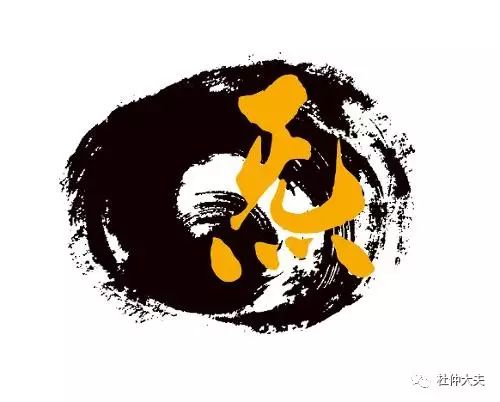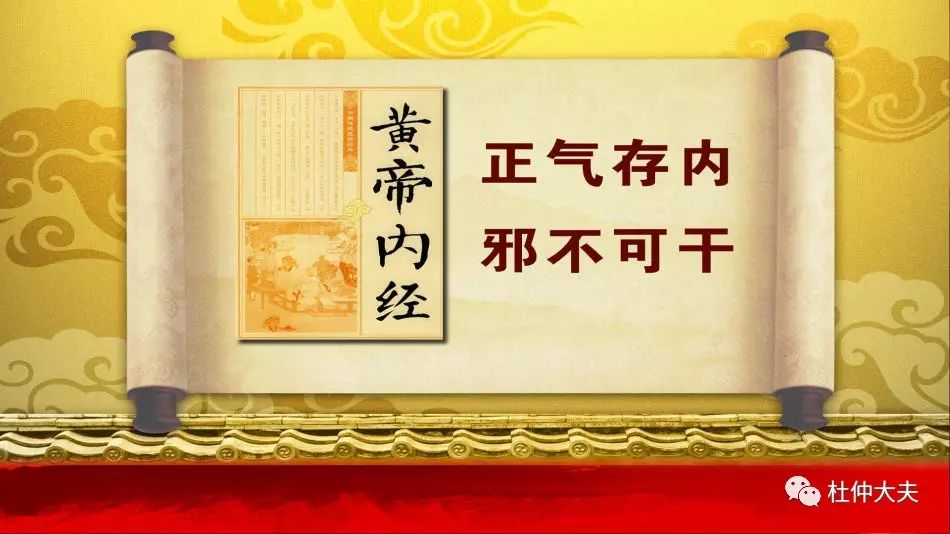Qi abnormalities mainly include Qi deficiency, Qi stagnation, Qi counterflow, Qi collapse, Qi sinking, and Qi obstruction. Below, we will introduce these six manifestations of Qi abnormalities and their causes. Have you experienced any of these?

Qi Abnormality One: Qi Deficiency
Concept: Refers to the pathological state of depleted vital energy, insufficient Qi throughout the body, weakened functions, declining organ function, and reduced resistance to disease.
Formation: Often caused by congenital insufficiency or postnatal malnutrition, dysfunction of the lungs, spleen, and kidneys leading to insufficient Qi generation, internal injury from overwork, or prolonged illness.
Manifestations: Systemic Qi deficiency may present with symptoms such as mental fatigue, lethargy, dizziness, spontaneous sweating, susceptibility to colds, pale complexion, pale tongue, and weak pulse. If it is primarily a deficiency of vital Qi, symptoms may include delayed growth and development, and reduced reproductive function. If it is primarily a deficiency of defensive Qi, symptoms may include palpitations upon exertion and shortness of breath.
Qi Abnormality Two: Qi Stagnation
Concept: Refers to the pathological state of Qi stagnation, indicating poor circulation of Qi.
Formation: Often caused by emotional distress; or phlegm, dampness, food accumulation, and blood stasis obstructing the flow of Qi. External pathogens may invade and obstruct Qi, or dysfunction of the organs may lead to Qi stagnation, or Qi deficiency may result in insufficient movement of Qi.
Manifestations: Qi stagnation in a specific area may present with distension and pain, and may lead to pathological products such as blood stasis and fluid retention. Qi stagnation can also cause dysfunction or obstruction of certain organs, such as lung Qi stagnation leading to chest tightness and cough; liver Qi stagnation leading to rib-side distension and lower abdominal pain; spleen and stomach Qi stagnation leading to poor appetite and abdominal distension; and intestinal Qi stagnation leading to abdominal pain that comes and goes, relieved by passing gas or belching. Therefore, Qi stagnation is most commonly seen in the lungs, liver, and spleen-stomach.
Qi Abnormality Three: Qi Counterflow
Concept: Refers to the pathological state of abnormal rising and falling of Qi, where Qi rises excessively or fails to descend properly.
Formation: Often caused by emotional injury, inappropriate food temperature, invasion by external pathogens, or phlegm and turbidity obstructing the organs, leading to Qi counterflow. Qi counterflow may also occur due to Qi deficiency.
Manifestations: Qi counterflow is commonly seen in the lungs, stomach, and liver. In the lungs, it manifests as cough and wheezing due to failure of lung Qi to descend; in the stomach, it manifests as nausea, vomiting, belching, and hiccups due to stomach Qi counterflow; in the liver, it manifests as headaches, facial redness, and irritability due to liver Qi counterflow. If liver Qi is excessively rising, it may lead to hemoptysis or hematemesis, and in severe cases, it may obstruct the clear orifices and cause fainting. Qi counterflow due to deficiency, such as lung deficiency leading to failure of Qi to descend, or kidney deficiency leading to inability to hold Qi, can also cause lung Qi counterflow; stomach deficiency can also lead to stomach Qi counterflow.
Qi Abnormality Four: Qi Collapse
Concept: Refers to the pathological state where Qi fails to contain itself and is lost in large amounts, leading to sudden functional decline.
Formation: Often caused by the righteous Qi being unable to resist the evil, or prolonged illness leading to depletion, resulting in Qi loss; or due to massive bleeding, excessive sweating, or loss of fluids.
Manifestations: Symptoms may include pale complexion, persistent sweating, closed eyes and open mouth, complete body weakness, incontinence, and a pulse that is weak or barely palpable.
Qi Abnormality Five: Qi Sinking
Concept: Refers to a pathological state characterized by insufficient upward movement or excessive downward movement of Qi, resulting in Qi sinking.
Formation: Often develops from Qi deficiency, particularly closely related to spleen Qi deficiency. If the body is weak or has been ill for a long time, it can lead to spleen Qi deficiency, causing the clear Yang to fail to rise or the middle Qi to sink.
Manifestations: Primarily manifests as “insufficient upward Qi” and “sinking middle Qi.” Insufficient upward Qi refers to spleen Qi deficiency leading to inability to transport clear fluids to the head, resulting in dizziness, tinnitus, and fatigue. Sinking middle Qi refers to spleen Qi deficiency leading to inability to support the organs, causing conditions such as gastric prolapse, kidney prolapse, uterine prolapse, and rectal prolapse. Spleen Qi deficiency can also lead to symptoms such as abdominal distension and frequent urge to defecate.
Qi Abnormality Six: Qi Obstruction
Concept: Refers to the pathological state of Qi blockage, severely obstructing outward movement, leading to obstruction of the clear orifices and fainting.
Formation: Often caused by emotional stimulation, or external pathogens, phlegm, and turbidity obstructing the Qi pathways, preventing Qi from moving outward, leading to obstruction of the clear orifices.
Manifestations: Clinically, symptoms may include fainting, Qi obstruction, pain obstruction, and phlegm obstruction. The onset is sudden, characterized by fainting and loss of consciousness, accompanied by other corresponding symptoms.

To nourish the righteous Qi, one must first nourish the kidneys, spleen, and lungs.
We all know the importance of righteous Qi to the human body. So where is the righteous Qi in the body?
First, it is in the kidneys, which are like the luggage we carry when we come into this world. Some people have a full luggage, while others have an empty one. This congenital luggage largely determines our health foundation.
Next is the spleen, which is like the handbag we carry. If we take care of it, we can reap health benefits; it can even compensate for some of the congenital deficiencies of the kidneys. However, if we indulge in poor diet and lifestyle, this handbag may even hinder the kidneys.
Finally, the lungs are the barometer of righteous Qi. With sufficient sleep and good diet, the lung Qi is abundant, and one appears vibrant; if care is lacking, lung Qi may be deficient, allowing various diseases to take advantage. Therefore, to ensure abundant righteous Qi, one must first nourish the kidneys, spleen, and lungs.
Si Jun Zi Tang (Four Gentlemen Decoction) is known as the “best formula for tonifying Qi.” It originates from He Ji Ju Fang and is a classic formula for tonifying Qi, strengthening the spleen and stomach, calming the heart, anti-cancer, lowering blood sugar, enhancing immunity, combating fatigue, restoring vitality, and enhancing male and female functions. It is suitable for symptoms of spleen and stomach Qi deficiency, presenting with pale complexion, low voice, shortness of breath, fatigue, dizziness, spontaneous sweating, weakness, symptoms worsening after activity, poor appetite, loose stools, weak limbs, pale tongue or with tooth marks, and weak pulse, with susceptibility to colds. Si Jun Zi Tang consists of 10g of Ren Shen (Ginseng), 10g of Bai Zhu (White Atractylodes), 10g of Fu Ling (Poria), and 5g of Zhi Gan Cao (Honey-fried Licorice).

Yi Qi Shu Gan Tang (Qi Tonifying and Liver Smoothing Decoction)
Formula Analysis: The main ingredients are Huang Qi (Astragalus) and Dang Gui (Angelica) for tonifying Qi and nourishing blood; Gui Zhi (Cinnamon Twig) and Bai Shao (White Peony) for warming Yang and unblocking collaterals, nourishing Yin and generating blood, thus balancing Yin and Yang; Chai Hu (Bupleurum), Huang Qin (Scutellaria), and Ban Xia (Pinellia) for harmonizing Yin and Yang and smoothing the liver; Chen Pi (Tangerine Peel) and Ban Xia for drying dampness and transforming phlegm, regulating Qi and harmonizing the middle; Da Zao (Jujube) and Gan Cao for tonifying Qi and strengthening the spleen, harmonizing the other herbs; Sheng Jiang (Fresh Ginger) assists Ban Xia and Chen Pi in transforming phlegm and harmonizing, while also moderating the toxicity of Ban Xia. Together, they work to tonify Qi and nourish blood, smooth the liver, and resolve phlegm and stasis. The formula is named Yi Qi Shu Gan Tang due to the emphasis on Huang Qi for tonifying Qi and Chai Hu for smoothing the liver.
Composition: 30g of Huang Qi, 6g of Dang Gui, 15g of Gui Zhi, 15g of Bai Shao, 9g of Chai Hu, 6g of Huang Qin, 9g of Ban Xia, 15g of Xiang Fu (Cyperus), 9g of Chen Pi, 6g of Gan Cao, 3 slices of Sheng Jiang, and 5 Da Zao.
Function: Tonifies Qi and nourishes blood, smooths the liver and resolves stagnation.
Indications: Suitable for chronic fatigue syndrome characterized by Qi deficiency, liver Qi stagnation, and accompanying blood deficiency and phlegm stasis.
Modifications: For severe blood deficiency, add 20g of Shu Di Huang (Rehmannia) and 30g of Ye Jiao Teng (Polygoni Multiflori Caulis); for Qi deficiency, add 20g of Tai Zi Shen (Pseudostellaria) and 15g of Bai Zhu; for significant spleen deficiency, add 15g of Fu Ling and 15g of Bai Zhu; for significant kidney deficiency, add 20g of Shou Wu (Fo-Ti) and 15g of Shu Di Huang; for severe Qi stagnation, add 12g of Yu Jin (Curcuma) and 12g of Chuan Xiong (Ligusticum); for significant Yin deficiency, consider adding Sheng Di Huang, Mai Men Dong (Ophiopogon), and Xuan Shen (Scrophularia). When there are accompanying signs of phlegm-dampness, blood stasis, or heat, care should be taken to support the righteous Qi without hindering the evil, and to expel the evil without harming the righteous Qi. Caution should be exercised when using Qi tonics like Ren Shen and Dang Shen to avoid causing Qi stagnation, and avoid using herbs that may damage the spleen and stomach. Qi-regulating herbs should not be used excessively to prevent worsening Qi deficiency.


